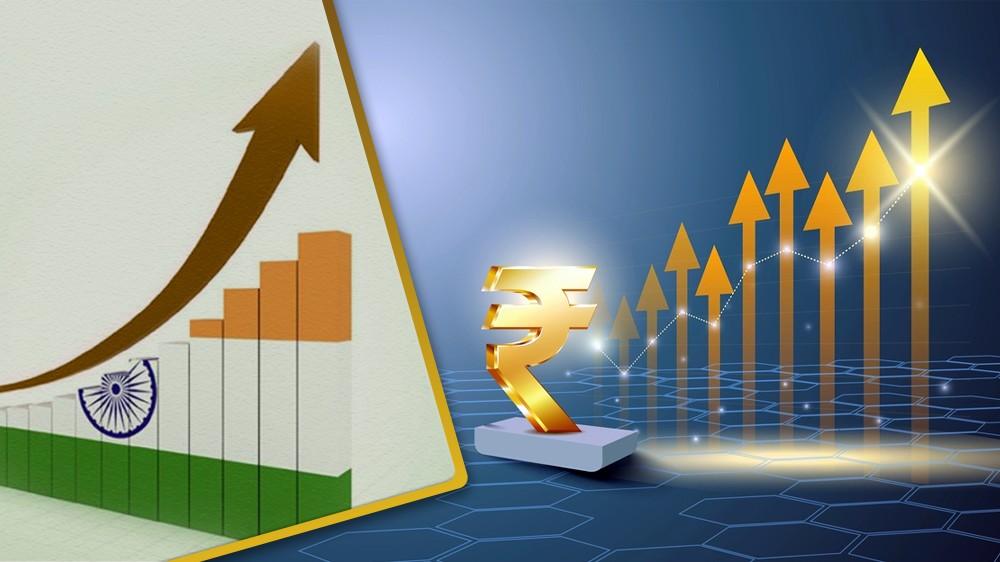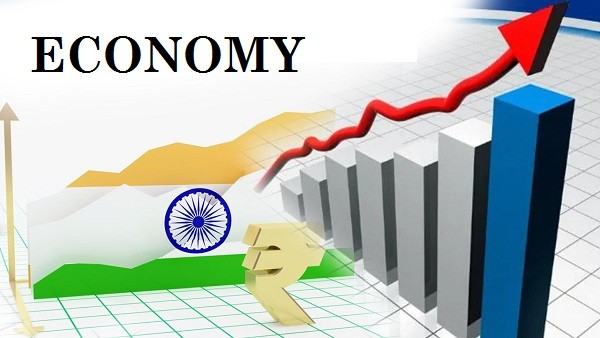India’s Meteoric Rise: Set to Become the World’s 3rd Largest Economy by 2027

India’s Meteoric Rise: Set to Become the World’s 3rd Largest Economy by 2027
In a recent announcement that has sent ripples across the financial world, Reserve Bank of India‘s (RBI) Deputy Governor, Michael Patra, has predicted that India is on the cusp of becoming the world’s third-largest economy by the year 2027. This optimistic projection has captured the attention of economists, policymakers, and investors worldwide, shedding light on India’s remarkable economic journey.
India, currently the world’s fifth-largest economy when considering market exchange rates, is poised to ascend to the coveted third position. Mr. Patra’s assessment hinges on two pivotal factors: the nation’s demographic advantage and the rapid development of its financial sector.
The Power of Demographics
One of India’s most significant assets in this economic ascent is its youthful population. With a median age of just 28 years, India boasts a sizable workforce that is the envy of many developed nations grappling with aging populations. This demographic dividend, as it is often referred to, can fuel economic growth by bolstering the labor force, stimulating consumer demand, and fostering innovation.
The burgeoning workforce, when harnessed effectively, can provide a substantial competitive advantage for India in the global economic landscape. However, to realize this potential, it is imperative that the nation invests in education, skills training, and job creation, ensuring that its youth can contribute meaningfully to the economy.

Financial Sector Development: A Catalyst for Growth
Another pivotal factor in India’s ascent to economic prominence is the rapid evolution of its financial sector. Over the past few decades, India has made significant strides in modernizing its financial infrastructure. The expansion of digital banking, the proliferation of fintech companies, and the implementation of ambitious financial inclusion initiatives have all contributed to this transformation.
The role of the Reserve Bank of India (RBI) cannot be overstated in this regard. The central bank has been instrumental in formulating policies that promote financial stability and inclusivity. Furthermore, the RBI has played a pivotal role in facilitating digital payment systems, reducing cash dependence, and enhancing transparency in financial transactions.
India’s embrace of digital finance has not only made financial services more accessible to a broader segment of the population but has also unleashed the potential for greater economic efficiency. The burgeoning fintech ecosystem has enabled small businesses and individuals to access credit, manage their finances, and participate more actively in the formal economy.
India’s Current Economic Status
As we embark on this discussion of India’s promising economic future, it is essential to understand its current standing. India presently holds the distinction of being the world’s fifth-largest economy when considering market exchange rates. However, when measured in terms of purchasing power parity (PPP), India ranks as the third-largest economy.
Purchasing power parity is a metric that adjusts for differences in price levels between countries, providing a more accurate reflection of the relative size of economies. This measurement indicates that the Indian economy possesses substantial purchasing power, enabling its citizens to buy more goods and services than suggested by market exchange rates alone.

Challenges on the Path to Economic Ascendancy
While the projections for India’s economic growth are undoubtedly promising, they are not without challenges. Achieving and sustaining a $5 trillion economy by 2027 will necessitate overcoming various hurdles.
First and foremost, India must address its infrastructure deficits. Inadequate infrastructure, including transportation networks, power supply, and digital connectivity, can impede economic growth. Investing in these critical areas is vital to facilitating the movement of goods and people, fostering industrial development, and attracting foreign investment.
Another challenge lies in addressing income inequality. Despite its rapid economic growth, India grapples with significant income disparities. Bridging this gap through targeted social and economic policies will be crucial to ensuring that the benefits of economic expansion are distributed more equitably across society.
Furthermore, India must continue to focus on regulatory reforms and ease of doing business to attract foreign investment. Streamlining bureaucratic processes, reducing red tape, and improving the business environment can catalyze economic growth and job creation.
The Global Perspective
India’s imminent rise to become the world’s third-largest economy will have far-reaching implications on the global stage. This development is set to alter the geopolitical landscape, as India’s economic influence grows commensurately with its economic heft.
For international investors, India’s ascent presents an array of opportunities. The Indian market, with its large and increasingly affluent consumer base, offers significant potential for businesses across various sectors, including technology, healthcare, and consumer goods.
Moreover, India’s emergence as a global economic powerhouse can foster greater collaboration with other nations. Trade partnerships, diplomatic ties, and cultural exchanges may all experience an upswing as India takes its place among the world’s leading economies.
Conclusion: A Bright Future Beckons
In conclusion, India’s projection to become the world’s third-largest economy by 2027, as forecasted by RBI’s Deputy Governor Michael Patra, is a testament to the nation’s economic resilience, demographic advantage, and the determined efforts of its policymakers.
While challenges lie ahead, the path to economic ascendancy is illuminated by India’s youthful population and a rapidly evolving financial sector. To realize this potential fully, India must invest in education, infrastructure, and regulatory reforms.
As India continues to stride toward this ambitious goal, the global community watches with anticipation, eager to witness the transformation of a nation and the reshaping of the global economic order. India’s journey serves as a compelling example of the power of demographics and prudent economic policies in unlocking a brighter future.





